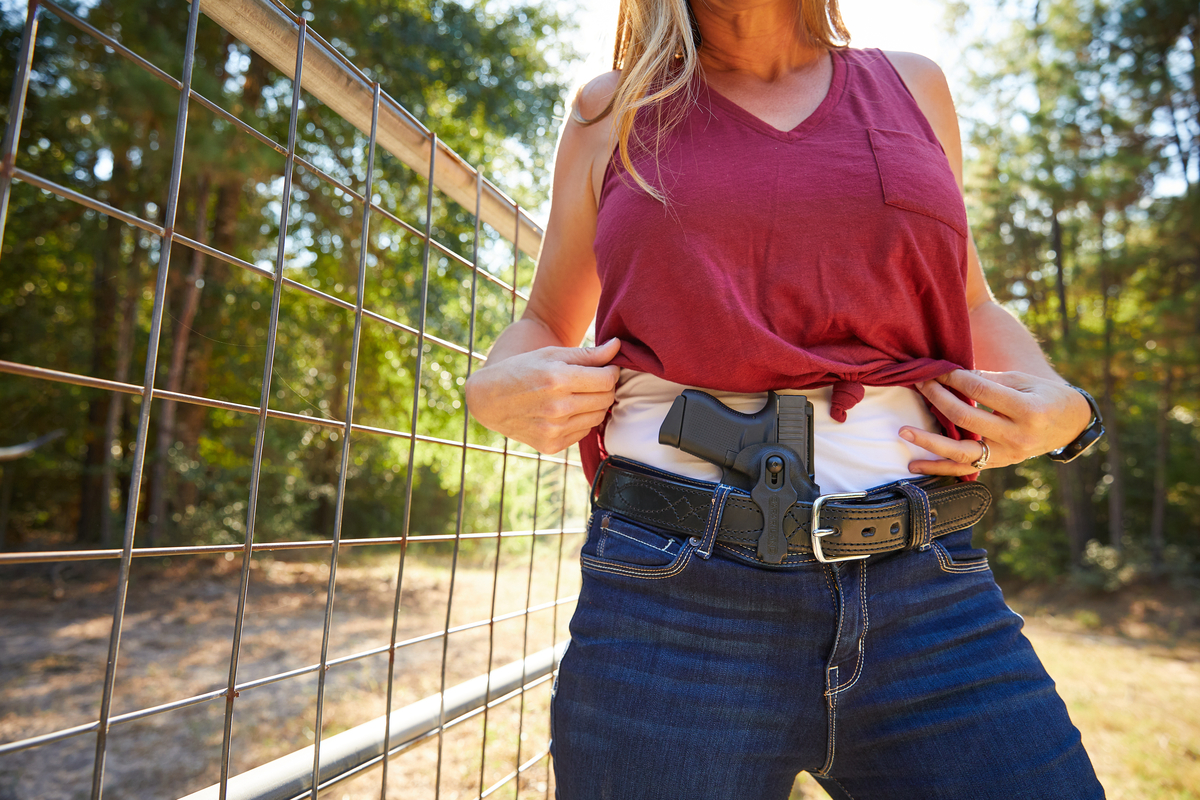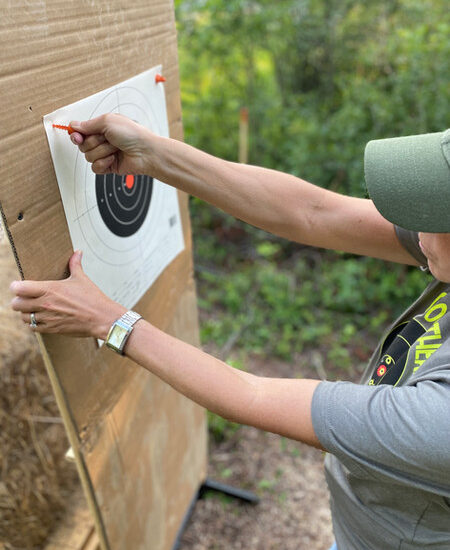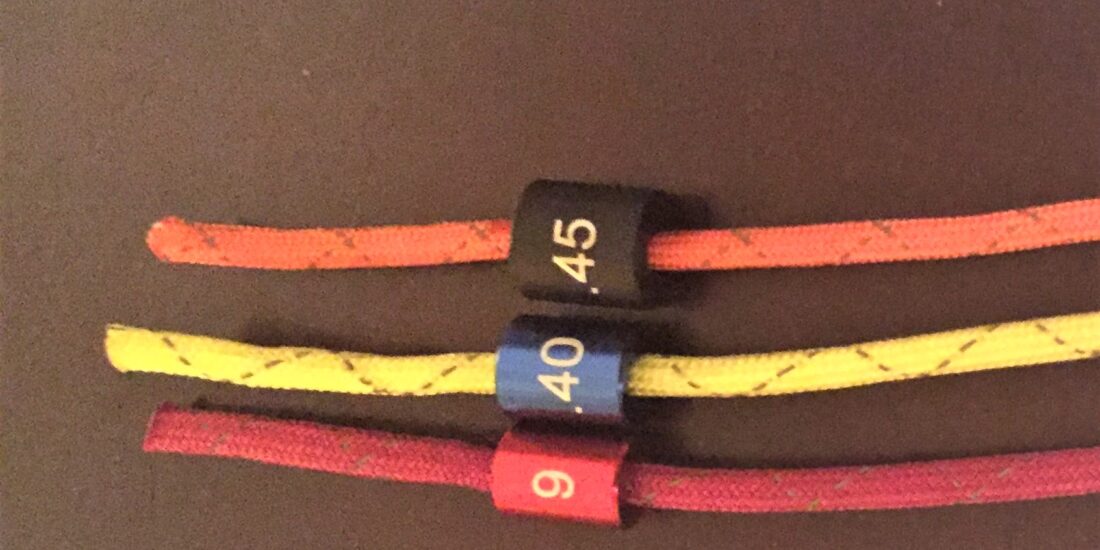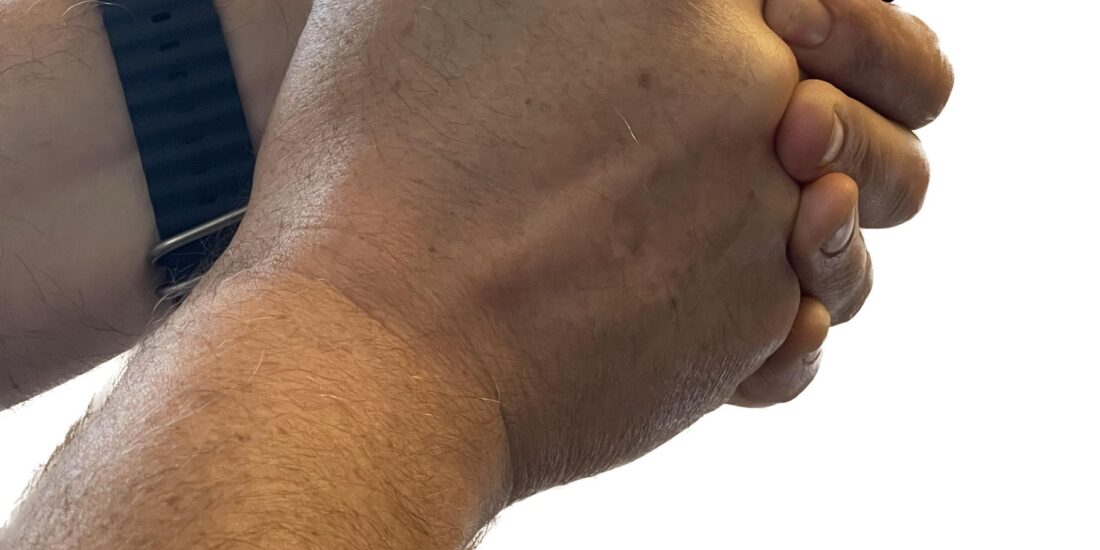Pistol vs. Active Shooter With A Rifle? Myths & Facts

I’m going to share several real life examples where good guys armed with pistols stopped bad guys armed with rifles and talk about some of the realities of pistol vs. rifle fighting and 5 little-known facts about engaging bad guys with body armor.
- May 3, 2015 Curtis Culwell Center in Garland TX. 59 year old officer Greg Stevens began taking rifle fire from 2 attackers at a distance of 15 yards who were both wearing body armor and a hundred round drum of ammo. Officer Greg Stevens drew his .45 Glock 41 and began shooting and advancing, taking both shooters out of the fight without being shot himself. He hit with more than half of the shots he fired.
- 1984, Jerusalem. 3 men armed with automatic rifles and grenades start shooting a crowd. An insurance salesman and an Army reserve officer engage them with their concealed pistols taking out 1. A merchant takes out the 2nd with his pistol. The 3rd is thrown off his gameplan, stops shooting and police take him into custody.
- Feb 12, 2007, Salt Lake City, UT. Less than 4 miles from where I lived at the time. A murderer armed with a shotgun and revolver started shooting people in the parking lot at Trolly Square Mall, entered the mall, and continued shooting. An off-duty officer was having dinner with his wife at a brewpub and engaged the shooter from the 2nd floor behind a see-through railing with a Kimber 1911 subcompact. The shooter shot back, but the incoming rounds fixed his position and he was no longer pursuing victims. A good friend of mine and another officer distracted the shooter and exchanged fire with him to distract him and other officers were able to flank and kill the shooter.
- 1993, Cape Town South Africa. 4 terrorists armed with full-auto AK-47s and grenades entered a church, killing 11 and injuring 47. A member of the church drew his 5 shot snub nosed .38 special and wounded one terrorist. This was enough to cause all 4 terrorists armed with full-auto rifles to flee.
- December 11, 2012, Clackamass Town Center Mall, Oregon. A murderer, armed with a rifle and 145 rounds shot 17 times, killing 3 before being confronted by a guard armed with a pistol. The guard was worried about hitting innocent people and didn’t fire, but the mere sight of a gun was enough to cause the better armed murderer to run, hide, and shoot himself.
- December 9, 2007, Arvada, Colorado. A murderer armed with a rifle and pistol killed 2 people at the Youth With a Mission training center and then drove to the New Life church where he killed 2 more before a member of the church volunteer security team, Jeanne Assam, shot and killed him.
- August 27th, 2010, Salt Lake City, UT. A man armed with a scoped semi-auto rifle with a bipod and 1,000 rounds of ammo attempts to get to an upper floor of a hotel. He’s asked to leave. SLC Officer Downes verbally confronts the man, who responded by firing several rounds at Downes, hitting him once in the calf. Downes fired 3 rounds from his duty pistol from 75 feet away, one striking the attacker in the head, stopping the threat.
- December 1, 2014, Austin TX. An extremist shooter who appeared to be looking to commit death by cop armed with an AK-47, pistol, and .22 rifle shot over 100 rounds at buildings in downtown Austin in the middle of the night. Then he began shooting at Sgt. Adam Johnson with the Capital Police mounted patrol. He was firing full magazines from the AK and reloading. Sgt. Johnson, while holding the reins of 2 skittish horses in one hand, fired a single shot at the shooter from 314 feet away, hitting and killing him. As an interesting twist, the bullet nicked the shooter’s car, ricocheted and tumbled 5 feet before striking and killing the shooter.
- December 29th, 2019, White Settlement, Texas. A man enters a church and shoots a parishioner and armed volunteer security with a shotgun before being shot in the head by 71 year old church security volunteer, Jack Wilson.
Let’s get real. Very few people want to be in a gunfight. Even special operations works hard to avoid “gunfights.” They’ll set up ambushes at the time and place of their choosing where they can use speed, surprise, and violence of action, sniping, indirect fire, grenades, charges, and flash bangs to minimize the chances of a true toe-to-toe fight.
A “fight” implies that the playing field is level and that effective fire is going in both directions.
If you do get into a gunfight, you want intel, armor, overwatch, long guns, an assortment of grenades, and a trained team that can shoot, move, and communicate.
You don’t want to get into a gunfight alone, armed with a pistol. Ever. Against ANY gun.
That being said, I believe that you should train for that worst case scenario.
Why?
Because if you only train for averages, extreme situations will shove you out of your comfort zone.
But if you train for the extremes, average situations will take care of themselves.
There’s another factor…
If you’re ever in a fight for your life, you want to be 110% sure that you’re going to win the fight, REGARDLESS OF THE REALITY OF THE SITUATION.
There’s a paradox in high stress situations that confidence won’t necessarily save you, but self-doubt is almost guaranteed to sabotage performance.
In a pistol vs. rifle situation, we can look at Officer Stevens’ statements after taking out two terrorists shooting at him with rifles from 15 yards away in Garland, TX for some great wisdom.
He said he just focused on his sights, pressed the trigger, and waited for them to come back into alignment before pressing the trigger again.
Imagine that.
“Normal” hit percentages for an officer vs. 2 shooters firing shoulder mounted weapons is in the low to mid teens. There was a shooting awhile back in San Francisco where officers fired 65 rounds at a suspect and didn’t hit with ANY of the shots fired. Officer Stevens applied basic fundamentals and hit with over 50% of shots fired, while in the open and advancing on 2 shooters with rifles.
What about distance?
There’s no doubt that a rifle is more accurate and more forgiving at distance than a pistol, but that doesn’t mean that a pistol is chopped liver. Here are some things to keep in mind…
A North American Arms belt-buckle sized .22 mini-revolver is capable of hitting a torso at 55 yards roughly half the time. There’s a reason law enforcement doesn’t carry a .22 mini-revolver on their duty belts, but I say this because there’s a belief that subcompacts are only accurate out to 7-10 yards and the performance of the tiny NAA .22 blasts that myth to smitherines.
A Glock with a stock barrel is capable of hitting a torso at 100 yards 90-100% of the time or sub-second splits at 55 yards while hitting a torso sized target:
Interestingly enough, my old laser rangefinder measured it at 55 yards. My new Leupold RX-1200i measures it at 65 yards. As any shooter worth his salt will tell you, if you measure the distance of a shot multiple times…tell people the longest distance because it is more impressive 🙂
For 100 yard shots, a good rule of thumb is to aim so that the head of your target is popping up over the top of your front sight (line your sights up with the shoulders) and your point of impact will be low to mid chest, depending on your muzzle velocity.
For 50 yard shots, you pretty much aim at center mass or slightly higher and your hits will be somewhere on the torso, regardless of caliber.
(FYI, this month, when you order the 21 Day Alpha Shooter DVD, you receive a wallet size long range pistol drop chart as a free bonus that will give you drops based on muzzle velocity out to 200 yards! No more guessing. No more having to remember. Just pull out the card, aim, and hit. You can get yours free by clicking >HERE<)
What about body armor?
Let me paint a picture quick…
A stress drill that is used in Krav Maga is to lay on your back and have someone do push-ups with one hand on your stomach and the other on your chest. It sucks, but if they’re about your same weight and don’t go too fast, it works. If they did the same thing, except they had a sharpened nail in each hand, you’d have holes in you because the impact point is so much smaller and focused.
Body armor does a few things, but one of the biggest things that soft body armor does is that it changes the impact point from being the tip of the bullet to being about the size of a tennis ball. Plates can increase the impact point to roughly the size of the plate.
You still absorb almost all of the energy of the bullet…just over a bigger area. Instead of getting a hole poked in you, it’s like getting jabbed with the end of a baseball bat. A PJ friend of mine has taken multiple AK rounds to the chest. He says that feels like he imagines it would feel to have someone take a swing at your chest with a baseball bat. He obviously lived, but he didn’t laugh it off.
With soft body armor, it’s common for people to be shocked and freeze for a couple of seconds, get the wind knocked out of them, have ribs broken, etc.
So, just because someone has soft body armor on doesn’t mean you shouldn’t start by shooting an attacker center mass.
That first hit will, at least, interrupt their OODA loop and may cause them to freeze momentarily. As we’ve repeatedly seen, most murderers slow down or completely stop at the first sign of effective resistance.
Should you stop there? No. There’s no one-size-fits-all answer, but that first shot to the vest could easily be thought of as a jab…you may get lucky and it may finish the fight, but more than likely it’s going to set up your next shot(s)…
One of the purposes of a center-mass shot on a moving attacker is to slow down the head. Shooting an active shooter wearing a vest center mass may allow you to follow up with a headshot, if necessary.
Don’t want to take the head shot? Thighs and hips are a perfectly viable option to stop a threat. They’re not as effective as the upper chest and head, but every time you put another round into an attacker, the more likely you’ll interrupt their OODA loop and stop them from continuing their assault.
A shot to body armor may allow you to close distance.
It may allow you to get to cover.
But whatever you do, don’t let the presence of body armor on a bad guy make you think that he’s invincible. You have to have the attitude that you’re going to come out on top.
5 Little Known Facts about Bad Guys & Body Armor
Some bad guys have good armor and good fitting armor, but bad-guy body armor tends to be different (sometimes VERY different) than good-guy body armor. This can be huge…
- Police body armor should all be NIJ tested and certified. Many departments destroy their armor when it reaches end-of-life. As a result, civilian body armor that bad guys tend to buy tends to be inferior to “real” body armor. That means that a bad guy may be wearing body armor designed to stop a .44 magnum, but your 9mm may cause enough back-face deformation to seriously injure him, break ribs, and change behavior. Notice the use of the words “tends to” and “may.” There are no guarantees.
- Police body armor has very little margin around the edges where there is no protection. Cheapo Chicom body armor can have as much as 2″ of non-ballistic plastic around the edge to make the armor cheaper/lighter.
- Theoretically, a bullet could push body armor completely through the body and the body armor would have, technically, kept the bullet from passing through. Back-face deformation is how much the armor pushes into you after the front is shot. It is MUCH greater on bad-guy Chicom armor than police armor.
- Steel plates are heavy, reduce mobility, and cause spalling if they don’t have enough anti-spalling covering. Spalling is the ricochet that happens when the bullet hits something harder than itself, breaks up, and splatters. It’s lead & copper. When it goes into the neck/inside of the arm of the wearer, it can create an immediate change in behavior. This is common when people buy cheap plates and attempt homemade anti-spalling coatings or don’t use any anti-spalling.
- If the bad guy was sitting with body armor on, it’s likely that everything from their belly-button down is not covered when they’re standing. This creates a larger target area when engaging the pelvis.
Prey vs. Predator
All active shooters are different, but I believe that all of them have a movie that’s played out in their head dozens of times where they dominate everyone around them and exert their will with impunity. Their manifestos reveal some of this…even when they’re counting on being killed.
In their movie, they are the apex predator and everyone else is prey. It’s like finishing a video game on the novice level and thinking you’re something special…until you run up against someone who actually knows what they’re doing.. And the notes that they leave ahead of time makes me think that most have either planned to run, commit suicide, or commit suicide by cop at the first sign of resistance.
It may not be 100% accurate, but that model explains why active shooters pick the targets they do and why they respond to resistance the way they do.
There have been lots of quotes recently that 98% of mass shootings happen in gun free zones. I think that the more accurate number is 95%, but it’s still pretty obvious that unarmed victim zones are a HUGE part of the problem.
And I hope it encourages you to fight rather than freeze if you ever find yourself in an active shooter situation. Flip the tables…decide not to be prey and take the fight to them.
What’s the biggest thing you can do to survive an active shooter situation if you’re armed with only a pistol and running isn’t an option?
It’s training so that your shooting skills become conditioned responses…reflexive…so that you can perform at a high level under extreme stress without having to think about it.
Is that important to you?
After recent attacks, do you see how some nut could do the same thing at your school, church or another event you’re at?
Do you want to develop the skills that will let you make effective hits on target with a pistol at longer-than-bad-breath distances in a fraction of the time as what’s possible with live-fire-only training?
Than I want to strongly encourage you to check out the 21 Day Alpha Shooter program by clicking >HERE< You’ll be thankful you did.
Using normal methods, it takes thousands of rounds of live fire and hundreds of hours to develop reflexive shooting skills, but with our at-home training that incorporates more than a dozen accelerated learning hacks, you can do it in only minutes a day for less than the cost of a single trip to the range. Get started now and start being better prepared by this weekend by clicking >HERE<
Already go through 21 Day Alpha Shooter? Then the next step is Draw Stroke Mastery. It’s the good-to-great training that shooters are using to slash YEARS off of the time it takes to become an elite shooter.
Ready for “Delta” and “Special Mission Unit” level skills? With shooting-on-the-move skills right out of your favorite action flick…except real? Then you want to check out Praxis by clicking >HERE<






